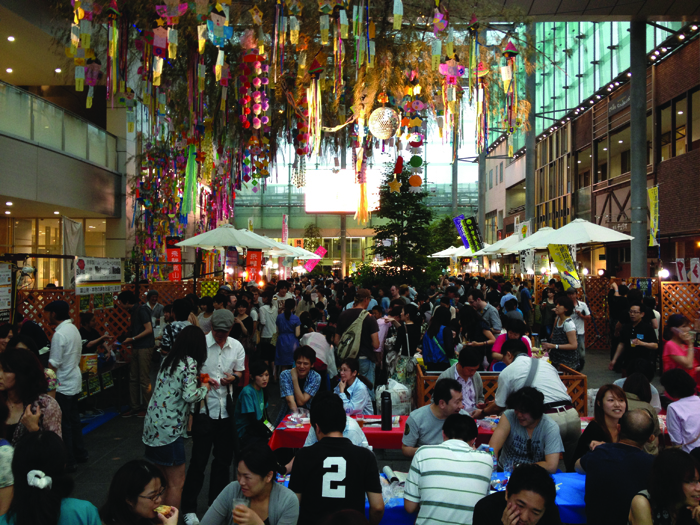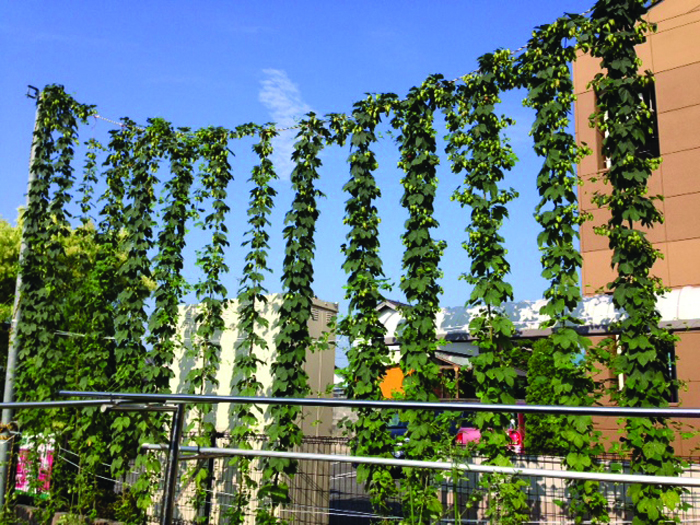The warm months are here. Welcome to beer festival season. Strap on your bullet-proof liver vests. Or just drink responsibly. Your body will love you for it.
Before we launch into our roundup of what’s transpired in our happy little beer universe over the last few months, we really want to encourage you to attend at least one beer festival this spring and/or summer. Seek out the brewers. Talk to them (if they’re not too super busy pouring beers). Beer festivals aren’t just for drinking beer or talking to your friends. Most craft brewers see festivals as an opportunity to connect directly with customers, which is an important part of the craft beer tradition (So is wearing beer T-shirts, growing bushy beards and, of course, building pyramids). As questions grow about what “craft beer” really means, we think festivals are a great way to explore it on your own through conversations with brewers. Let them tell you their philosophy and share with you their passion for making beer. Don’t let media tell you what craft beer is. Not even us. Hear it from them!
But you can let Budweiser tell you what craft beer isn’t. It isn’t their beer. They are proud macro-brewers. That was the message, at least, in a TV ad that aired earlier this year during the Super Bowl, one of the most widely watched sporting events in America (and the most expensive advertising all year). In the commercial, the company proclaims it brews “the hard way”, producing light lagers that you don’t need to “fuss over” like craft beer. Apparently fussing means sniffing and sipping, as the imagery shows. Craft beer advocates erupted in a frenzy of indignation. Budweiser’s marketing team must have been grinning. While appealing to their hardcore base, they also lured their ‘persnickety’ adversaries into producing unprecedented free publicity on social media (even we’re drawing your attention to the commercial). Ironies abound: Budweiser recently acquired a craft brewery that has brewed a style of beer that Bud makes fun of in the commercial. It also adopted the same marketing tactics of disparaging their competitors that many craft brewers have used for years against industrial breweries. It’s just not as cool if it’s the big bully, right? Roughly 90% of Youtube users have given it the thumbs down. In the end, Bud’s commercial was kind of like a gesture of acknowledgement to the growing strength of craft beer. Which gained 10% market share the hard way.
Japan’s industrial breweries have been busy unveiling new lines of beer they call craft or at least craft-like.There’s also been quite a lot of activity among small, independent craft breweries. We count more than ten new ones in just the past few months that have either received their license, or at least are on the verge of approval. In a big shift from the past, many of the brewers are also owners. A handful of them also have homebrewing backgrounds and are from overseas. Once these new small breweries settle in, we’ll be writing a little more about them, but for now let’s welcome them to a happy life of poverty! Small-scale brewing means living life the ‘hard way.’
International Women’s Collaboration Brew Day
IWCBD, held on March 8th, once again brought together several women from Japan’s craft beer community for a day of collaborative brewing. This year, over one hundred women signed up for the event from eleven countries. All teams brew a “Unite Pale Ale”, whose basic guidelines (color, hops, IBU, ABV) are provided. Organized by the Pink Boots Society, the event is intended to draw attention to women’s contributions to brewing. This year’s team included Kagitani, head brewer at Loco Beer (where they brewed), Michiko and Nozomi of Watering Hole, Satsuki of Kurakura, and Ayaka of Vivo!, with special guest Ryo, of Devil Craft, who pretended to be a woman that day (those are Michiko’s words, not ours). We’d love to see more teams from different regions participate next year.
In other international news, San Francisco held its annual Beer Week festivities in February, drawing together breweries not only from all around the expansive San Francisco Bay Area, but also from up and down the West Coast. Like the recent Tokyo Beer Week, but much bigger, it featured over 600 events at bars and restaurants throughout Bay Area cities. Beer Week also introduced people to more than a few beers from Japan at a couple of Japanese craft beer events. Publisher Ry Beville was on hand at Beer Week’s opening festivities, which were attended by the mayor as well as several breweries that export to Japan. Many in the brewing industry have been intrigued by Japan’s steadily developing craft beer scene and expressed excitement over receiving copies of Japan Beer Times. Because we are exciting, dammit. But not nearly as exciting as the Coedo beer pairing party hosted by Beville at Kushido, a popular Japanese restaurant in Oakland, which filled with people. A few days later, he was off to a Japanese craft beer event nearby at The Trappist, where beers from over a dozen Japanese craft brewers once again attracted throngs of people. Now for his words:
“I got a good laugh when I saw the draft prices. People in Japan often grumble about the high prices of imports, but it was not much different here. And in a market where some domestic specialty beers can run much higher in price, people seemed happy to pay. I was a little surprised to meet so many people that identified themselves as ‘fans of Japanese craft beer’ but that’s the good name Japanese craft beer is making for itself overseas, especially the likes of Shiga Kogen, Minoh, Baird and Coedo. I of course encourage everyone to visit Japan to try the many more good beers provided by local brewers.”
Yes, please visit Japan. We need you to provide some sales tax revenue to the government to offset the reduction in beer taxes we’re hoping for. And, of course, we’d love to see you!
We leave you with this image of Spring. Japan is not traditionally known for hop cultivation, even though it is home to two native varieties: Sorachi Ace (developed by Sapporo and now mostly grown in the U.S.) and Shinshu Wase. There are several breweries that have been cultivating small hop fields, most notably Shiga Kogen, Daisen-G and Baird Beer. There are a handful of others using the small supply of Shinshu Wase available. This time of year the rhizomes are pushing up through the earth, looking for places to wrap their tendrils. By summer’s end, they will become massive rows of thicks vines laden with hop flowers for harvesting. If you can get your hands on some plants, they are easy to grow and make great green curtains to block out the sun. And they remind you of beer, which is never bad.
This article was published in Japan Beer Times # () and is among the limited content available online. Order your copy through our online shop or download the digital version from the iTunes store to access the full contents of this issue.






